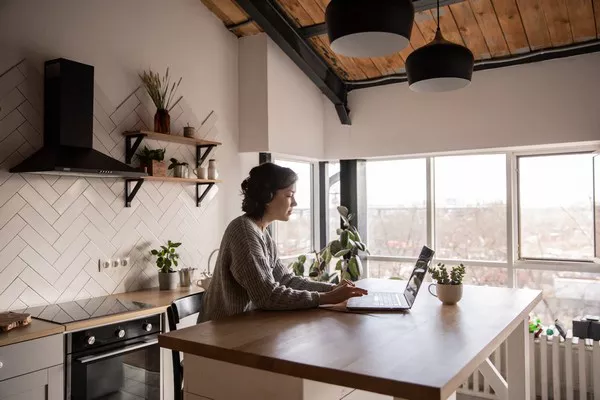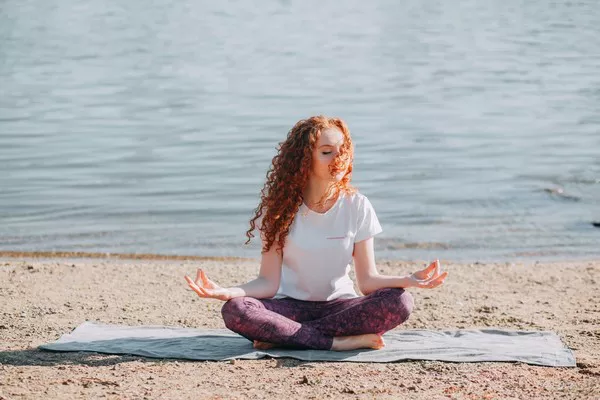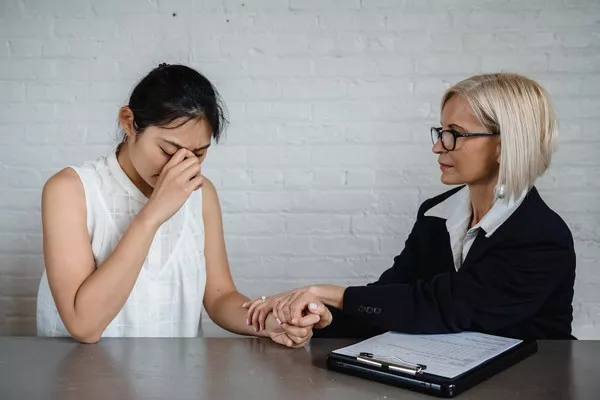Agoraphobia is an anxiety disorder characterized by an intense fear of being in situations where escape might be difficult or help unavailable in the event of a panic attack or similar symptoms. Many people with agoraphobia avoid crowded places, public transportation, or even leaving their homes. This article will explore what agoraphobia is, its symptoms and causes, and effective treatment strategies to help individuals manage and overcome this condition.
1. Understanding Agoraphobia
What is Agoraphobia?
Agoraphobia is often misunderstood as simply a fear of open spaces. However, it is more accurately described as a fear of being in situations where one feels trapped or helpless. This fear can lead individuals to avoid various environments, such as:
- Crowded places (shopping malls, concerts)
- Public transportation (buses, trains, airplanes)
- Open spaces (parks, bridges)
- Enclosed spaces (elevators, small rooms)
Symptoms of Agoraphobia
Symptoms of agoraphobia can vary in intensity and may include both physical and psychological manifestations. Common symptoms include:
Panic Attacks: Sudden episodes of intense fear that can cause physical symptoms such as heart palpitations, sweating, trembling, shortness of breath, or dizziness.
Avoidance Behavior: Actively avoiding places or situations that may trigger anxiety.
Fear of Losing Control: A persistent fear of having a panic attack in public or feeling trapped.
Physical Symptoms: Nausea, chest pain, or a feeling of being faint.
Anxiety about Future Panic Attacks: Worrying about when and where the next panic attack will occur.
The Impact of Agoraphobia
Agoraphobia can significantly impact an individual’s quality of life. It can lead to:
- Social isolation
- Difficulty maintaining employment
- Strain on relationships
- Reduced overall well-being
Understanding the profound effects of agoraphobia is crucial for developing effective treatment strategies.
2. Causes of Agoraphobia
The exact cause of agoraphobia is not fully understood, but several factors can contribute to its development:
Genetic Factors
A family history of anxiety disorders may increase the likelihood of developing agoraphobia. Genetics can play a role in how individuals respond to stress and anxiety.
Environmental Factors
Experiencing stressful life events, such as trauma, loss, or major life changes, can trigger agoraphobia. For instance, a traumatic experience in a public place may lead to a fear of similar situations.
Psychological Factors
Certain personality traits, such as being prone to anxiety or having low self-esteem, can increase the risk of developing agoraphobia. Additionally, individuals who have experienced panic attacks may develop a fear of those attacks happening again in public.
Other Mental Health Conditions
Agoraphobia often co-occurs with other mental health disorders, such as generalized anxiety disorder, panic disorder, or depression. These conditions can exacerbate the symptoms of agoraphobia and complicate treatment.
3. Diagnosing Agoraphobia
A proper diagnosis is essential for effective treatment. Mental health professionals typically use the following methods to diagnose agoraphobia:
Clinical Interview
A thorough clinical interview allows the therapist to understand the individual’s symptoms, history, and impact on daily life. The clinician will ask about the frequency and intensity of panic attacks, avoidance behaviors, and overall functioning.
Diagnostic Criteria
The Diagnostic and Statistical Manual of Mental Disorders (DSM-5) outlines specific criteria for diagnosing agoraphobia. According to the DSM-5, an individual must experience significant fear or anxiety about two or more of the following situations:
Using public transportation
Being in open spaces
Being in enclosed spaces
Standing in line or being in a crowd
Being outside of the home alone
Rule Out Other Conditions
It is also important to rule out other mental health conditions that may present similar symptoms. A mental health professional will assess for panic disorder, generalized anxiety disorder, and other related conditions.
4. Treatment Options for Agoraphobia
Treating agoraphobia often involves a combination of therapies and strategies. The most effective treatments include:
Cognitive-Behavioral Therapy (CBT)
Cognitive-behavioral therapy is one of the most effective treatments for agoraphobia. CBT focuses on identifying and changing negative thought patterns and behaviors.
Key Components of CBT:
Cognitive Restructuring: This involves identifying irrational thoughts related to fear and replacing them with more rational, balanced thoughts.
Exposure Therapy: Gradual exposure to feared situations is a crucial part of CBT. This process helps desensitize individuals to their fears. For example, a person may start by imagining being in a crowded place, then gradually progress to visiting a small store.
Behavioral Activation: Encouraging individuals to engage in activities they have been avoiding can help reduce anxiety over time.
Medication
In some cases, medication may be prescribed to help manage symptoms of agoraphobia. Common types of medication include:
Antidepressants: Selective serotonin reuptake inhibitors (SSRIs) and serotonin-norepinephrine reuptake inhibitors (SNRIs) can help balance neurotransmitters and improve mood.
Anti-anxiety Medications: Benzodiazepines may be prescribed for short-term relief of anxiety symptoms. However, they are not typically recommended for long-term use due to the risk of dependence.
Beta-Blockers: These medications can help manage physical symptoms of anxiety, such as rapid heart rate and sweating.
Support Groups
Joining a support group can provide individuals with a sense of community and understanding. Sharing experiences with others who face similar challenges can reduce feelings of isolation and provide encouragement.
Lifestyle Changes
Incorporating healthy lifestyle changes can also support recovery from agoraphobia. Consider the following strategies:
Regular Exercise: Physical activity can help reduce anxiety and improve overall mood. Aim for at least 30 minutes of moderate exercise most days of the week.
Healthy Diet: A balanced diet can positively impact mental health. Focus on whole foods, such as fruits, vegetables, whole grains, and lean proteins.
Adequate Sleep: Prioritize good sleep hygiene. Aim for 7-9 hours of quality sleep each night to promote mental and emotional well-being.
Mindfulness and Relaxation Techniques: Practices such as meditation, deep breathing, and yoga can help reduce anxiety and promote relaxation.
Gradual Exposure Techniques
Gradual exposure techniques can be particularly effective for individuals with agoraphobia. This involves slowly introducing oneself to feared situations in a controlled manner. Here’s how to implement gradual exposure:
Steps for Gradual Exposure:
Identify Fear Hierarchy: List situations that trigger anxiety, ranking them from least to most anxiety-provoking.
Start Small: Begin with the least anxiety-provoking situation. For example, if going to a grocery store feels overwhelming, start by standing outside the store for a few minutes.
Increase Exposure Gradually: Once comfortable with the first step, gradually move to more challenging situations. This could involve entering the store for a short visit, then gradually increasing the time spent inside.
Practice Coping Strategies: Use relaxation techniques and coping strategies during exposure to manage anxiety. This can help reinforce positive experiences.
Celebrate Progress: Acknowledge and celebrate each step taken, no matter how small. This positive reinforcement can motivate continued progress.
5. Coping Strategies for Agoraphobia
In addition to professional treatment, individuals with agoraphobia can benefit from various coping strategies:
Journaling
Writing down thoughts and feelings can help individuals process their experiences. Journaling can provide insight into triggers and patterns of anxiety, making it easier to address them.
Breathing Techniques
Practicing deep breathing exercises can help manage anxiety in the moment. Here’s a simple technique:
Find a Comfortable Position: Sit or lie down in a quiet space.
Inhale Deeply: Breathe in slowly through your nose for a count of four.
Hold Your Breath: Keep the air in your lungs for a count of four.
Exhale Slowly: Breathe out through your mouth for a count of four.
Repeat: Continue this cycle for several minutes until you feel calmer.
Positive Affirmations
Using positive affirmations can help counter negative thoughts. Create a list of affirmations that resonate with you, such as “I am capable of facing my fears” or “I can take small steps toward overcoming my anxiety.” Repeat these affirmations regularly to reinforce a positive mindset.
Grounding Techniques
Grounding techniques can help individuals stay present and reduce feelings of anxiety. Here’s a simple grounding exercise:
Focus on Your Surroundings: Take a moment to observe your environment. Identify five things you can see, four things you can touch, three things you can hear, two things you can smell, and one thing you can taste.
Engage Your Senses: This exercise helps redirect your focus from anxiety to the present moment.
Establish a Routine
Creating a daily routine can provide structure and stability. Having a set schedule can help reduce uncertainty and anxiety. Include time for self-care, relaxation, and enjoyable activities.
6. When to Seek Help
If you or someone you know is struggling with agoraphobia, it is essential to seek help. Consider reaching out to a mental health professional if:
- Symptoms are interfering with daily life.
- You are experiencing severe anxiety or panic attacks.
- You feel isolated or overwhelmed.
- You have thoughts of self-harm or suicide.
Conclusion
Agoraphobia can be a challenging condition, but it is treatable. Understanding the nature of agoraphobia, its symptoms, and its causes is the first step toward recovery. Effective treatment options, including cognitive-behavioral therapy, medication, support groups, and lifestyle changes, can help individuals manage their symptoms and regain control over their lives.
By implementing gradual exposure techniques and coping strategies, individuals can take actionable steps toward overcoming their fears. Remember that recovery is a journey, and it is essential to be patient and kind to yourself along the way. With the right support and strategies, it is possible to overcome agoraphobia and lead a fulfilling life. If you or someone you care about is struggling, don’t hesitate to seek help. You are not alone, and there is hope for a brighter future.
Related topics:




















